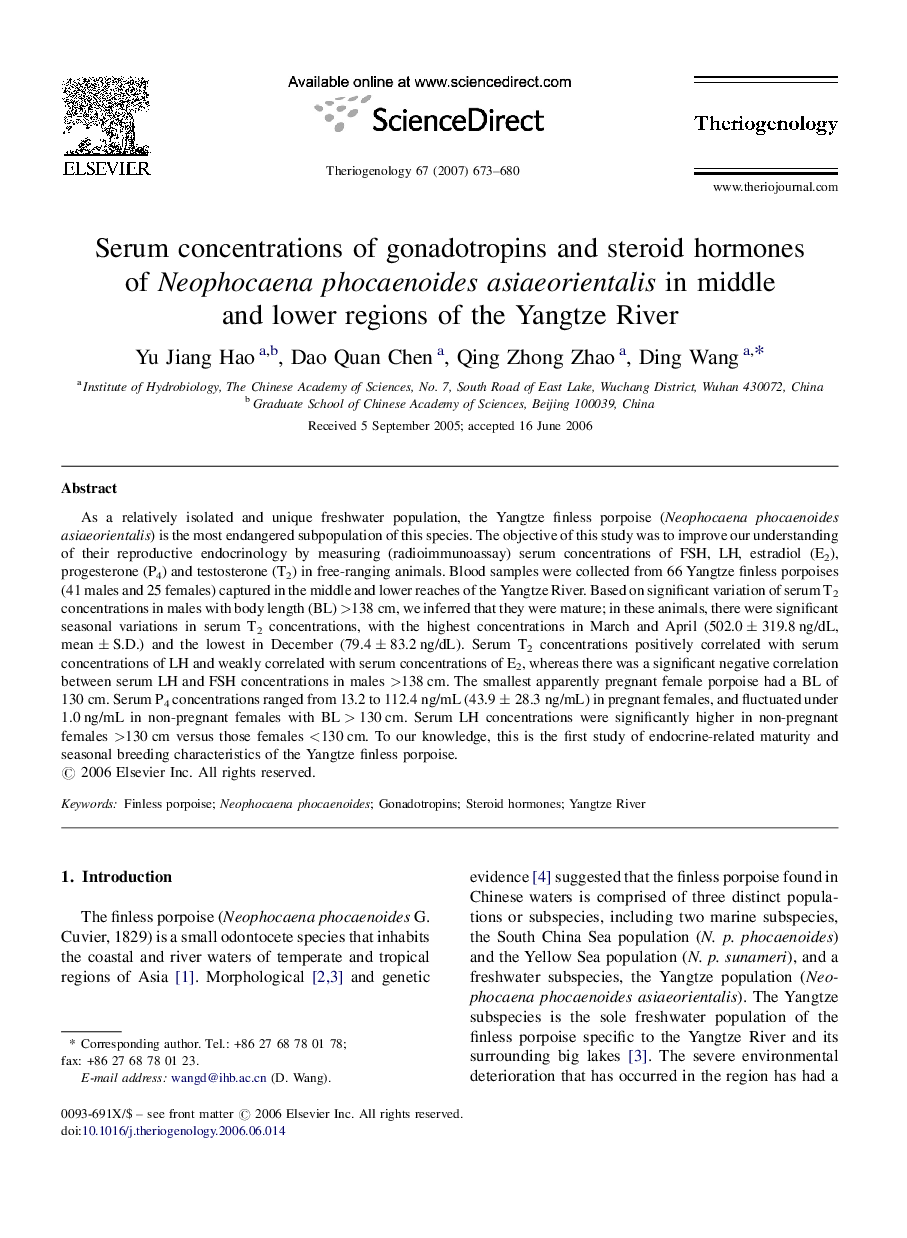| Article ID | Journal | Published Year | Pages | File Type |
|---|---|---|---|---|
| 2098321 | Theriogenology | 2007 | 8 Pages |
As a relatively isolated and unique freshwater population, the Yangtze finless porpoise (Neophocaena phocaenoides asiaeorientalis) is the most endangered subpopulation of this species. The objective of this study was to improve our understanding of their reproductive endocrinology by measuring (radioimmunoassay) serum concentrations of FSH, LH, estradiol (E2), progesterone (P4) and testosterone (T2) in free-ranging animals. Blood samples were collected from 66 Yangtze finless porpoises (41 males and 25 females) captured in the middle and lower reaches of the Yangtze River. Based on significant variation of serum T2 concentrations in males with body length (BL) >138 cm, we inferred that they were mature; in these animals, there were significant seasonal variations in serum T2 concentrations, with the highest concentrations in March and April (502.0 ± 319.8 ng/dL, mean ± S.D.) and the lowest in December (79.4 ± 83.2 ng/dL). Serum T2 concentrations positively correlated with serum concentrations of LH and weakly correlated with serum concentrations of E2, whereas there was a significant negative correlation between serum LH and FSH concentrations in males >138 cm. The smallest apparently pregnant female porpoise had a BL of 130 cm. Serum P4 concentrations ranged from 13.2 to 112.4 ng/mL (43.9 ± 28.3 ng/mL) in pregnant females, and fluctuated under 1.0 ng/mL in non-pregnant females with BL > 130 cm. Serum LH concentrations were significantly higher in non-pregnant females >130 cm versus those females <130 cm. To our knowledge, this is the first study of endocrine-related maturity and seasonal breeding characteristics of the Yangtze finless porpoise.
